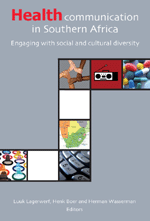Imaging Africa: Gorillas, Actors And Characters
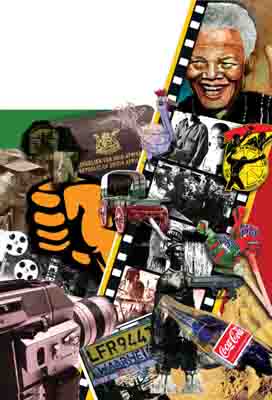 Africa is defined in the popular imagination by images of wild animals, savage dancing, witchcraft, the Noble Savage, and the Great White Hunter. These images typify the majority of Western and even some South African film fare on Africa.
Africa is defined in the popular imagination by images of wild animals, savage dancing, witchcraft, the Noble Savage, and the Great White Hunter. These images typify the majority of Western and even some South African film fare on Africa.
Although there was much negative representation in these films I will discuss how films set in Africa provided opportunities for black American actors to redefine the way that Africans are imaged in international cinema. I conclude this essay with a discussion of the process of revitalisation of South African cinema after apartheid.
The study of post-apartheid cinema requires a revisionist history that brings us back to pre-apartheid periods, as argued by Isabel Balseiro and Ntongela Masilela (2003) in their book’s title, To Change Reels. The reel that needs changing is the one that most of us were using until Masilela’s New African Movement interventions (2000a/b;2003). This historical recovery has nothing to do with Afrocentricism, essentialism or African nationalisms. Rather, it involved the identification of neglected areas of analysis of how blacks themselves engaged, used and subverted film culture as South Africa lurched towards modernity at the turn of the century. Names already familiar to scholars in early South African history not surprisingly recur in this recovery, Solomon T. Plaatje being the most notable.
It is incorrect that ‘modernity denies history, as the contrast with the past – a constantly changing entity – remains a necessary point of reference’ (Outhwaite 2003: 404). Similarly, Masilela’s (2002b: 232) notion that ‘consciousness of precedent has become very nearly the condition and definition of major artistic works’ calls for a reflection on past intellectual movements in South Africa for a democratic modernity after apartheid. He draws on Thelma Gutsche’s (1972) assumption that film practice is one of the quintessential forms of modernity. However, there could be no such thing as a South African cinema under the modernist conditions of apartheid. This is where modernity’s constant pull towards the future comes into play (Outhwaite 2003). Simultaneous with the necessary break from white domination in film production, or a pull towards the future away from the conditions of apartheid, South Africans will need to re-acquire the ‘consciousness of precedent’, of the intellectual and cultural heritage of the New African Movement, such as is done in Come See the Bioscope (1997) which images Plaatjes’s mobile distribution initiative in the teens of the century. The Movement’s intellectual and cultural accomplishments in establishing a national culture in the context of modernity is a necessary point of reference for the African Renaissance to establish a national cinema in the context of the New South Africa (Masilela 2000b). Following Masilela (ibid.: 235), debates and practices that are of relevance within the New African Movement include:
1. the different structures of portrayal of Shaka in history by Thomas Mofolo and Mazisi Kunene across generic forms and in the context of nationalism and modernity;
2. the discussion and dialogue between Solomon T. Plaatje, H.I.E. Dhlomo, R.V. Selope Thema, H. Selby Msimang and Lewis Nkosi about the construction of the idea of the New African, concerning national identity and cultural identity;
3. the lessons facilitated by Charlotte Manye Maxeke and James Kwegyir Aggrey in making possible the connection between the New Negro modernity and New African modernity;
4. the discourse on the relationship between Marxism and modernity within the context of the Trotskyism of Ben Kies and I.B. Tabata and the Stalinism of Michael Harmel, Albert Nzula and Yusuf Mohammed Dadoo; and
5. the feminist political practices of Helen Joseph, Lilian Ngoyi, Phyllis Ntanatala and others.
Read more
Ton Dietz ~ Working Paper: Destination Africa. The Dynamics 1990-2015
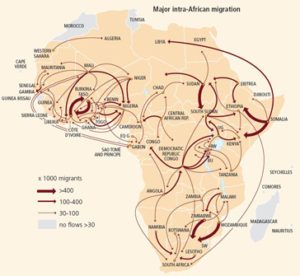 In September 2017 the African Studies Centre Leiden published a Thematic Map about Africa’s international migration in 2015. At the backside the 2015 data published by UN-DESA were used to show the total international immigration data per country, linked to the position of these countries on the Human Development Index for the same year. Also the data for intercontinental immigration per country were given.
In September 2017 the African Studies Centre Leiden published a Thematic Map about Africa’s international migration in 2015. At the backside the 2015 data published by UN-DESA were used to show the total international immigration data per country, linked to the position of these countries on the Human Development Index for the same year. Also the data for intercontinental immigration per country were given.
These were clearly showing that immigration was much higher for the African countries with a relatively high HDI score than for the African countries with a low HDI score. Intercontinental immigration was much lower than international immigration, because most international migrants stay within Africa. The thematic map showed that out of 20.4 million people who were stated to be ‘immigrants’ (= born in another country) only 2.5 million came from outside Africa. A map was shown with all major intra-African migration flows as measured in 2015. And two maps were included showing how many people had immigrated to the 54 African countries, and what the numbers and relative importance was of inter-continental (non-African) immigrants per country, linked to the 2015 HDI scores. So far so good. But there is much more to show.
For this preparatory note for the ‘Destination Africa’ conference we added a dynamic picture: looking at the changes between 1990 and 2015. And we also looked at the dynamics of the patterns of migration: where did the people come from who have been counted as ‘immigrants in Africa’ in 1990, 2000, and 2015. An interesting question can also be answered: what is the colonial hangover? And is it true that Europe is losing ground?
This is volume 141 of the series ASCL Working Papers.
Africa’s Youth And Conflicts: A Sub-Saharan Spring?
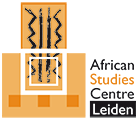 Recent travels to Chad, Cameroon and Mali confronted me with the conflicts in these countries as well as in the Central African Republic, and the youth’s involvement in them. How are we as researchers to analyse the conflicts and protests, what questions and fields of study should we explore? Are we observing a Sub-Saharan spring?
Recent travels to Chad, Cameroon and Mali confronted me with the conflicts in these countries as well as in the Central African Republic, and the youth’s involvement in them. How are we as researchers to analyse the conflicts and protests, what questions and fields of study should we explore? Are we observing a Sub-Saharan spring?
Opposed youth groups in CAR
In Cameroon I worked on a project with researchers from CAR. Since 2013 CAR has entered a new cycle of violence. Seleka and anti-Balaka are opposed groups of mainly youth who fight in a rhythm of vengeance. The government controls the capital city Bangui, but other parts of the country are under control of the diverse ‘rebel’ groups. Both sides are mainly filled with young (wo)men.
Salaries cut in Chad
In Chad I met young men who had just been released from prison where they had been tortured on accusation of disturbing the order. Since January this year Chad has entered a new period of protests and strikes. It was not acceptable for most people that salaries were cut by half and indemnities were not paid. Families could no longer pay for the school fees of their children and some families could only afford one meal a day. It was another period of scarcity in a long sequence of protests in, what is in fact, bankrupt Chad since November 2015. Youth are raising their fists against the regime, but they have little power as the oppression is far more powerful. Since a month now the internet has been cut down again. (This research done in Chad from 2014 to now about youth movements/hardship gives more insight.)
Read more: http://www.ascleiden.nl/mirjam-de-bruijn/africas-youth-and-conflicts-sub-saharan-spring
Indigenous Oral Traditions From The Huasteca, Mexico
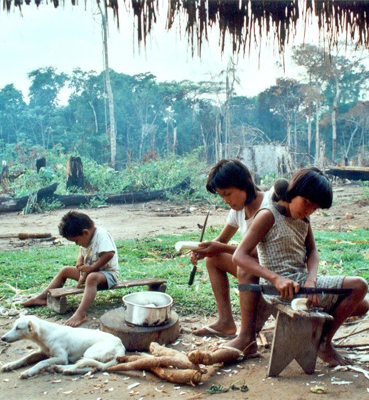 This paper deals with indigenous oral traditions in Mexico. It addresses issues of indigenous languages and how they can be documented, preserved and revitalized through projects about oral traditions in a national context in which there is a renewed discussion on multiculturalism and cross-cultural understanding.
This paper deals with indigenous oral traditions in Mexico. It addresses issues of indigenous languages and how they can be documented, preserved and revitalized through projects about oral traditions in a national context in which there is a renewed discussion on multiculturalism and cross-cultural understanding.
In Mexico, the discussion of multiculturalism centers on ‘indigenous issues’, specifically on how indigenous peoples should integrate into the so-called modern, more westerly-orientated rest of the nation. In Mexico, indigenous cultures and languages are still systematically discriminated, as they are often seen as irrelevant remnants of a past that have, at most, mere folkloristic value. Since the 1990’s, public policies regarding indigenous issues underwent a change and now focus on concepts of multiculturalism in order to favor a more equal position for indigenous languages and cultures.
The new policies were adopted after national pressures like the 1994 Zapatista uprising, and followed up on international interests in the situation of indigenous peoples, such as shown through the festivities around the 500th Anniversary of the Discovery of America by Columbus in 1992, or in the declaration of the UN’s First and Second Decade of the Indigenous Peoples (1995-2014). They enhance a novel discourse that includes concepts like cultural diversity, interculturalism, intangible heritage, and other terms that are in accordance with the terminology of international conventions on indigenous issues.
Journal Of Anthropological Films
![]() Film cameras, video and sound recorders have for decades been used by anthropologists as research tools, for collecting data, for documentation, for advocacy, for representing a case or a group of people, for disseminating empirical insights and for communicating research findings. For the first time in the history of Visual Anthropology anthropological film can now be published on par with written articles, assessed by peers, and inscribed in international credential systems of academic publication as the Nordic Anthropological Film Association (NAFA) has launched this first edition of Journal of Anthropological Films (JAF)
Film cameras, video and sound recorders have for decades been used by anthropologists as research tools, for collecting data, for documentation, for advocacy, for representing a case or a group of people, for disseminating empirical insights and for communicating research findings. For the first time in the history of Visual Anthropology anthropological film can now be published on par with written articles, assessed by peers, and inscribed in international credential systems of academic publication as the Nordic Anthropological Film Association (NAFA) has launched this first edition of Journal of Anthropological Films (JAF)
Go to: http://boap.uib.no/index.php/jaf/index
Editorial
The Nordic Anthropological Film Association (NAFA) has launched the Journal of Anthropological Films (JAF)
Film cameras, video and sound recorders have for decades been used by anthropologists as research tools, for collecting data, for documentation, for advocacy, for representing a case or a group of people, for disseminating empirical insights and for communicating research findings. For the first time in the history of Visual Anthropology anthropological film can now be published on par with written articles, assessed by peers, and inscribed in international credential systems of academic publication as the Nordic Anthropological Film Association (NAFA) has launched this first edition of Journal of Anthropological Films (JAF) published by Bergen Open Access Publishing (BOAP).
JAF publishes films that combine documentation with a narrative and aesthetic convention of cinema to communicate an anthropological understanding of a given cultural and social reality. JAF publishes films that stand alone as a complete scientific publication based on research that explore the relationship between “contemporary anthropological understandings of the world, visual and sensory perception, art and aesthetics, and the ways in which aural and visual media may be used to develop and represent those understandings” to borrow words from Paul Henley (in Flores, American Anthropologist, Vol 111, No.1, 2009:95). While most films will stand for themselves, only accompanied by an abstract, supplementary text will be accepted when it adds productively to the anthropological analysis and in case the peer-reviewers will ask for it. Read more
Health Communication In Southern Africa: Engaging With Social And Cultural Diversity
Part I: Individual And Social Network Factors
– 1. Condom Use In Tanzania And Zambia: A Study On The Predictive Power Of The Theory Of Planned Behaviour On Condom Use – Merel Groenenboom, Julia van Weert, & Bas van der Putte
– 2. Using Social Network Information To Design Effective Health Campaigns To Address HIV In Namibia – Rachel A. Smith
– 3. Social Capital And Communication On HIV Prevention With Young Adolescents In Kayamandi Township, South Africa – Henk Boer & Tessa A. Custers
Part II: Social Representations and Entertainment Education
– 4. The Portrayao Of HIV/AIDS In Lesotho Print Media: Fragmented Narratives And Untold Stories – Cecilia Strand
– 5. Social Representations Of HIV/AIDS In South Africa and Zambia: Lessons For Health Communication – John-Eudes Lengwe Kunda & Keyan G. Tomaselli
– 6. Edutainment Television Programmes: Tackling HIV/AIDS On The South African Broadcasting Corporation – Viola C. Milton
– 7. Edutainment Radio Programmes: The Importance Of Culturally Relevant Stories – Mia Malan
Part III: Patient Information
– 8. Using Pictograms In A Patient Information Leaflet To Communicate Antiretroviral Medicines Information To HIV/AIDS Patients In South Africa – Ros Dowse.
– 9. Understanding Motion In Static Pictures: How Do Low- Educated South Africans Evaluate Arrows In Health-Related Pictures? – Hanneke Hoogwegt, Alfons A. Maes & Carel H. van Wijk.
– 10. ‘Come, Let Me Show You’: The Use Of Props To Facilitate Communication Of Antiretroviral Dosage Instructions In Multilingual Pharmacy Interactions – Jennifer Watermeyer & Claire Penn.
– 11. Understanding South African Patient Information Leaflets: Readability And Cultural Competence – Daleen Krige & Johann C. De Wet.
Part IV: Supporting People: Practical Approaches To HIV/AIDS Communication
Individual and Social Network Factors
– 12. An Aids Awareness Programme In A Rural Area Of South Africa To Promote Participation In Voluntary Counselling And Testing – Hugo Tempelman & Adri Vermeer.
Patient Information
– 13. The Employment Of HIV Positive Young People For Health Promotion In Higher Education: A Case Studiy Of The Dramaide Health Promoters Project, South Africa – Emma Durden.
– 14. Cell Phones For Health In South Africa – Tanja E. Bosch. Read more
